Join More Than 50,000+ Subscribers and get latest camera news and rumors
NEW CAMERA VIDEOS ON YOUTUBE
|
By admin, on May 7th, 2025
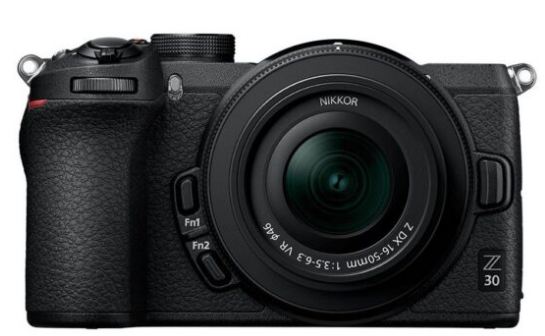
Nikon Z30 Firmware Update Ver 1.20: Enhanced Performance for APS-C Z-Mount Camera, check out below wether this update is necessary for your or not
Why should you update the Nikon Z30?
This particular update is important for content creators and vloggers—those who use wireless connectivity to transfer files from their Nikon Z30 camera to smartphone or PC.
Key benefits of Nikon Z30 firmware update
What are your key advantages or benefits after updating your camera?
- Improved reliability: Fixes rare unresponsiveness issues while wirelessly transferring your data to a smartphone or PC.
- Enhanced connectivity: This particular firmware update maintains a stable connection between the camera and the smartphone or PC.
- For photographers and content creators both: Either you are a content creator or photographer, but if you are using wireless transfer then this firmware fix is necessary for you.
How to update your Nikon Z30 firmware to version 1.20
Updating your Nikon Z30 firmware is quite a straightforward method. If you follow these basic steps, then you will have a successful installation:
- Visit the official site and download the firmware with the download link.
- Prepare your camera: always keep your battery fully charged before updating your camera, and also insert a completely formatted memory card into the camera.
- Transfer the firmware: copy the downloaded firmware to the root directory of the memory card.
- Now install the update: insert the memory card into the camera, go to setup menu, check your version, and select “Update.” Follow the on-screen instructions to complete the process.
- Verify the update: after installation, confirm it’s firmware version 1.20.
Nikon Z30 — an amazing camera with a super-sensitive 20 Megapixel APS-C DX format sensor, one of the best cameras at budget for low light photography and content creation.
Stay updated with TheNewCamera.com
At TheNewCamera.com, we are committed to bringing you the latest news and rumors. Follow us on our social media handles to get live updates.
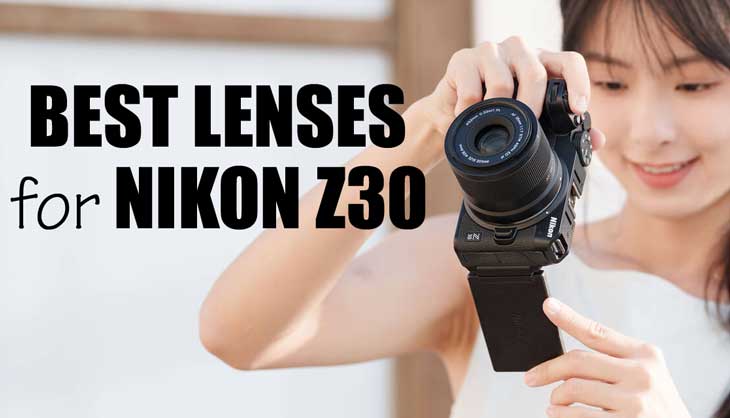
The post “Nikon Z30 Firmware Update Ver 1.20: Enhanced Performance for APS-C Z-Mount Camera” appeared first on thenewcamera.com | Written by thenewcamera.com team on 6:47 am, Wednesday, 7 May 2025, Greenwich Mean Time (GMT) Follow us on our social pages FACEBOOK | TWITTER | INSTAGRAM to get live Camera News + Nikon Rumors 24X7.
By admin, on May 5th, 2025
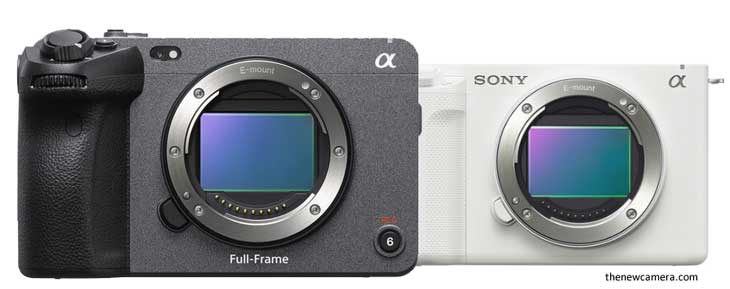
According to the latest rumour on the web, Sony is planning to announce two new cameras in May 2025. Let’s discuss the announcement.
Update on May 08, 2025 – Sony FX3a officially announced
Sony has officially announced the Sony FX3a Camera, which is the same as the FX3 camera but with a new display screen.
Buy Sony FX3a Camera from B&H Store and Adorama
Update – Sony FX3a Coming on May 07
Updated at 3:56 pm, Tuesday, 6 May 2025, Greenwich Mean Time (GMT): According to the latest rumors, Sony will announce the Sony FX3a on May 7, 2025. The camera will only have a Minor improvement related to its Display. Since the display used by the FX3 is no longer in production, everything will remain the same.
1. Sony FX3 updated model
The first camera is an updated version of the FX3 camera which will carry a minor upgrade like: Expected announcement date May 07, 2025
- New LCD Screen: Enhanced for better visibility and touch controls.
- Modern Charging Port: Probably USB-C for faster, easier charging.
- Minor Improvements: Tweaks to performance and design for a smoother experience.
But the new FX3 updated model will have a higher price (approx $4500), due to the new tariff rule implemented in the USA.
2. Major Alpha series camera announcement at the end of the month
This is bigger and exciting news, and according to the rumour mill, it’s a completely new kind of camera that borrows “1 aspect” from the Sony Alpha series.
As per the initial hints, it seems like a full-frame compact mirrorless camera / a vlogging powerhouse made for professional content creators.
Join the conversation 💭💬🗯
What do you think is coming next from Sony? Can you guess the mystery model name or share your thoughts on the upcoming Sony announcement?
Stay tuned, more updates coming.
You can follow us on our social pages FACEBOOK | TWITTER | INSTAGRAM, If you have time –>see more Sony Alpha Rumor + Latest Camera News
Source SARwebsite
By admin, on May 5th, 2025
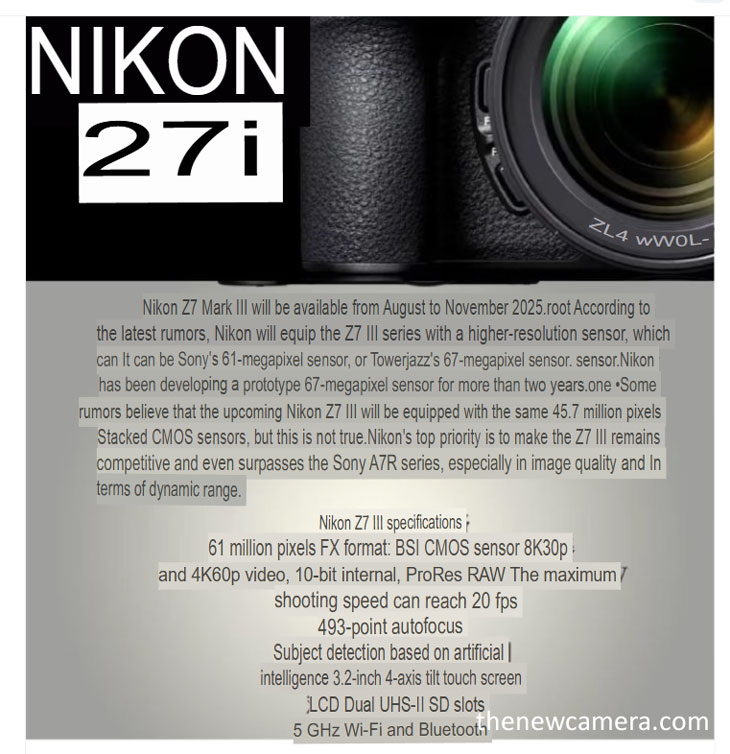
The photography community is buzzing with speculation about the Nikon Z7 Mark III, thanks to recently leaked specifications. The Independent Association of Photographers from China has labeled these leaks as fake, but are they entirely baseless? Let’s dive into the details of the leaked specs, their plausibility, and what they mean for Nikon’s high-resolution camera lineup.
Official Statement from the Independent Association of Photographers from China
—- This what they said about the information leaked above — Many people have been messaging me asking if this rumor is true, and many believe it, but the rumors about the Nikon Z7III are completely false.
Before saying anything is real or fake, one has to analyze its specifications. Does this leaked specification have any possibility of its existence in the upcoming Nikon Z7 Mark 3 camera? Does it have anything real inside it, whatever we have seen or read till now?
As you can see in the specifications, it is very clearly written: 61-megapixel FX-format BSI CMOS sensor and 8K 30 fps video recording capability with 4K 60 fps recording mode.
The timeline Z7 III arrival they’re sharing right now is from August to November 2025. We are very clearly known to the fact that Nikon is running late as per their scheduled announcement timeline, and the big reason behind that—as their representatives clearly mentioned, is that the demand for the Z7 series is less compared to the Z6 series. That’s why they are updating the Z6 III camera a bit early, as there are a lot of wedding photographers waiting for an update. But unfortunately, the Z7 series market space or the consumer base is slightly limited, and that’s why Nikon intentionally delayed its announcement.
When Will the Nikon Z7 Mark III Camera Arrive?
The Nikon Z7 Mark III camera is already running late, as we have already explained to you. It has been intentionally delayed, but Nikon hasn’t postponed the Z7 series. But, yes, it’s a fact that after the arrival of the Nikon Z5 II, the Z7 II has become one of the most old and outdated cameras in the Nikon Z lineup, so it raises a very high probability that Nikon may bring an update to this series before 2025 ends.
So that means yes, there is a very high probability that we may see the announcement of the Z7 Mark 3 in the year 2025.
Nikon Z7 Mark III Camera Sensor Resolution: Sony or TowerJazz?
Now, about the specifications—it has been very clearly mentioned that it may use Sony’s 61-megapixel or TowerJazz’s 67-megapixel sensor. And why have they said so? Is there any logical reason behind this?
We all know that Nikon has a very good relationship with Sony Imaging Division, and they are continuously using their sensors in most of their cameras. Now, as they have also mentioned TowerJazz, we do know that Nikon APS-C series like the Nikon Z50 Mark II, the Nikon Z30, and the Nikon Zfc’s 20-megapixel APS-C CMOS sensor is made by TowerJazz.
So yes, they can take sensors from TowerJazz, since they do have a good relationship with the company.
And one of the most important things that you might have forgotten is that Nikon China accidentally leaked the Z7 Mark 2 sample images back in 2022 with 67-megapixel resolution. But just after those images were published, Nikon China’s social media handlers deleted those images.
So there is a very high probability that they already have the working prototypes of the Nikon Z7 Mark 3 camera with multiple sensor variations, including sensors like 61 MP from Sony or 67 MP from TowerJazz.
Nikon Z7 Series: Resolution Over Speed
And the Nikon Z7 series is about resolution, not speed. If someone wants a hybrid solution, Nikon does have cameras like the Nikon Z8 and the Nikon Z9—both of them use the same sensor, which is a perfect combination of speed and resolution.
So yes, whatever text has been written in the leaked set of specifications doesn’t seem to be completely false. So we have to wait and watch what actually comes, since we already have this set of data in front of us. Now it’s about Nikon taking a step forward and announcing the long-awaited Z7 Mark 3 camera in front of us.
Key Features of the Nikon Z7 Mark 3 (Based on Leaks)
- 61 / 67 MP FX-Format BSI CMOS Sensor
- 8 K30p and 4K60p Video, 10-bit Internal, ProRes RAW
- Up to 20 fps Max Shooting
- 493-Point AF
- AI-Based Subject Detection
- 3.2″ 4-Axis Tilting Touchscreen LCD
- Dual UHS-II SD Slots
- 5 GHz Wi-Fi and Bluetooth
Nikon Z7 Mark 3 vs. Z7 Mark 2: Specification Comparison
| Feature |
Nikon Z7 Mark 3 (Leaked) |
Nikon Z7 Mark 2 (Current) |
| Sensor Resolution |
61 MP or 67 MP |
45.7 MP |
| Video Recording |
8K 30 fps, 4K 60 fps |
4K 60 fps |
| Sensor Manufacturer |
Sony or TowerJazz |
Sony |
| Expected Announcement |
August–November 2025 |
Released 2020 |
| Target Audience |
High-resolution shooters |
High-resolution shooters |
Why the Nikon Z7 Mark 3 Leak Seems Plausible
- Historical Precedent: Nikon China’s 2022 leak of 67-megapixel sample images suggests prototype development.
- Nikon’s Partnerships: Strong ties with Sony and TowerJazz make the rumored sensors feasible.
- Market Demand: The Z7 series’ focus on resolution aligns with the leaked high-megapixel specs.
- Delayed Timeline: Nikon’s prioritization of the Z6 III explains the Z7 III’s delay, but 2025 is a logical target.
While the Independent Association of Photographers from China dismisses the leaked specifications as fake, the details align closely with Nikon’s technological capabilities and market strategy. The rumored 61-megapixel or 67-megapixel sensor, combined with 8K video, positions the Z7 Mark 3 as a powerhouse for resolution-focused photographers. With a potential announcement in 2025, all eyes are on Nikon to confirm or deny these exciting leaks. And obviously, Nikon will keep silent over these without a doubt.
Reference
Nikon Z7 III – High Resolution Sample Image Accidentally Leaked by Nikon China [Rumor]
Also see – Nikon Upcoming Cameras 2025 | Canon Upcoming Cameras 2025 | Sony Upcoming Cameras 2025
ABout the author: The article “Nikon Z7 Mark III Leaked Specifications: Is the Rumored Camera Real?” written and updated by thenewcamera.com team on 3:04 pm, Monday, 5 May 2025, Greenwich Mean Time (GMT) | Follow us for more updates and Get LIVE RUMORS –> FACEBOOK | TWITTER | INSTAGRAM to get live news — > get live news + Nikon Rumors 24X7
By admin, on May 3rd, 2025
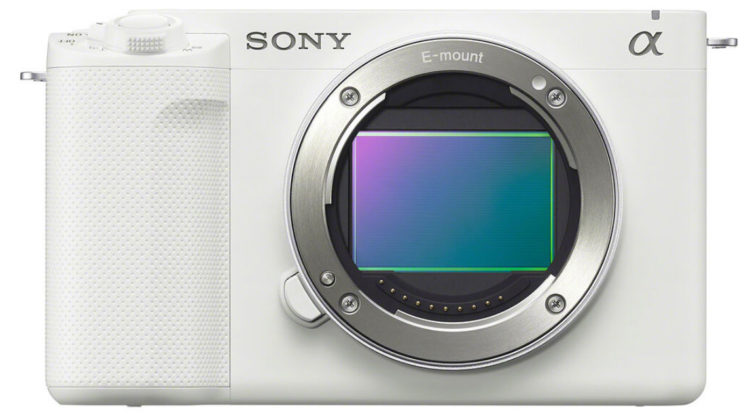
According to the latest rumours, Sony will be announcing a new product in May 2025. At this very moment, the only thing we know from a tipster’s hint is to consider it as a cine-style FX camera from Sony. Take a look at what the tipster has said to us in the previous post.
It’s a camera made for video users. I already have the review unit and am impressed with its overall performance. The only feature I wish this camera had is open-gate recording. However, the IBIS is the new unit that works like a charm for handheld usage.
Also, take a look at what the Sony Alpha Rumor website (Link) has said.
I am now 100% sure that there will be a new Sony announcement in May! I’m not sure yet what the name of the camera will be… but I’ll say this: I’m not buying the FX3 or the a7CII right now. I’ll have more to say next week.
PS: Btw, I was waiting for the Sony A7V camera announcement.
Stay tuned for more updates
You can follow us on our social pages FACEBOOK | TWITTER | INSTAGRAM, If you have time –>see more Sony Alpha Rumor
By admin, on May 1st, 2025
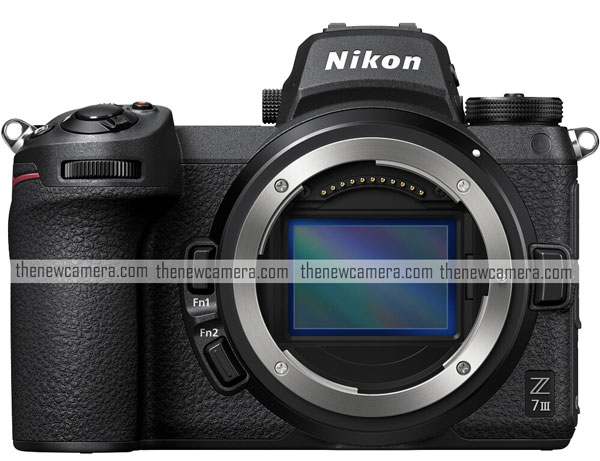
Nikon registered a new camera with a model code N2410 in the wireless certification agency. The camera supports Wi-Fi up to 5 GHz, so it’s probably not an entry-level camera. Right now, the possibilities we have: The long-rumored Nikon Z7 Mark III — people are waiting for this update for a long time, and you already had the Z6 III a while ago. After the Nikon Z6 III, we also had strong rumors related to the Nikon Z9 Mark II camera. Finally, the entry-level Nikon Z30 II is expected to arrive by the end of 2025. Check out the list of Nikon’s Upcoming cameras 2025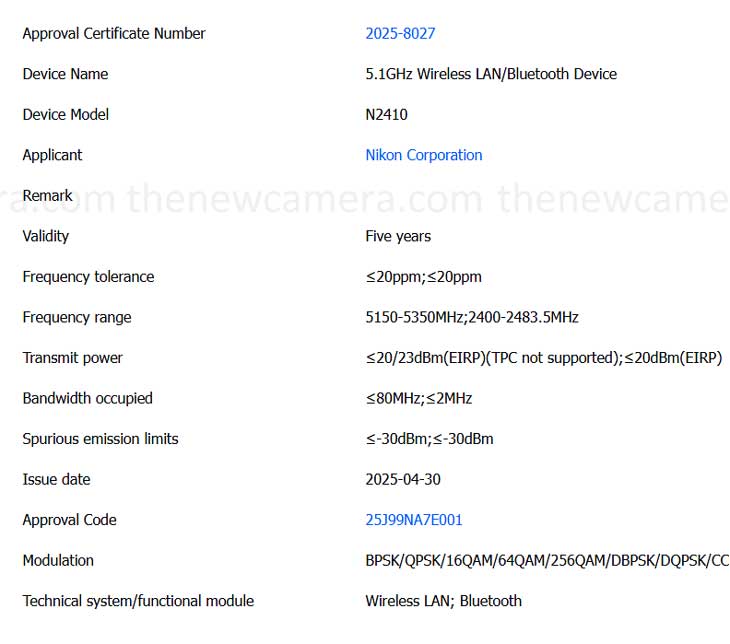
While registration doesn’t confirm launch dates, Nikon usually announces cameras within 3 months after wireless certification. That means we could see an official teaser or announcement around August-September of 2025.
List of Nikon Camera and Registred Model Codes:
Z7: N1710
Z6: N1711
Z50: N1912
Z6II: N1929
Z7II: N1932
Z5: N1933
Z9: N2014
Zfc: N2016
Z8: N2120
Z30: N2121
Zf: N2137
Z6III: N2214
Z50II: N2318
Z5II: N2326
Z????: N2410
The article was posted Updated on 8:13 amSaturday, 3 May 2025 Greenwich Mean Time (GMT) by thenewcamera.com team
Stay tuned to thenewcamera.com for real-time updates, rumors, and official announcements | Follow us on our social pages: FACEBOOK | TWITTER | INSTAGRAM to get live news + Nikon Rumors 24X7
Source E88_8888
By admin, on April 28th, 2025
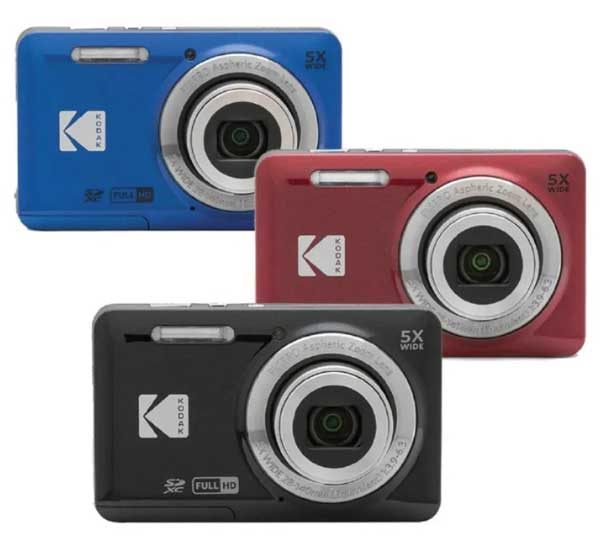
The compact market in Japan is experiencing remarkable demand, and the new consumer base is generally the young photographers and Social media influencers. The latest sales ranking from BCN+R for February to March 2025, the report reveals this surprising leader: the Kodak PIXPRO FZ55 tops the sales chart of compact cameras. Just after that, we have the Fujifilm Instax Mini Evo in second place, and in third place, we have the Panasonic Lumix TZ99. It’s really a big surprise that in the smartphone world, the demand for compact cameras surges again. But what is driving the compact camera boom in the market?, And what does it mean to photographers in 2025? We have to explore those things, too.
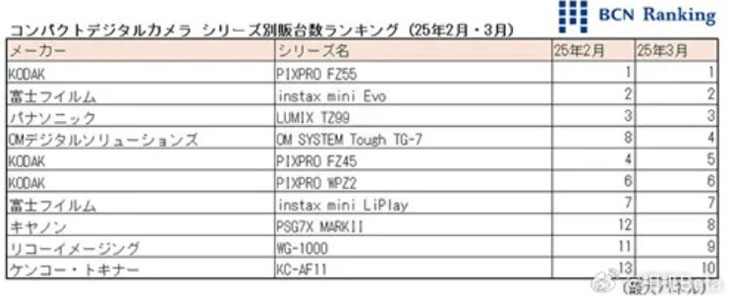
Compact Camera Sales Soar in Japan
According to BCN+R, a leading retail data provider that actually covers approximately 40% of the total Japanese electronics retailers, it has mentioned in their report that in March 2025, the overall sales volume surged by 39% year-on-year, while the sales value grew by 13.6%. So, if we look at the previous sales reports from the past five months consecutively in the compact camera market, we have seen double-digit growth, and it all started from November 2024, where we witnessed an increase in the sales of compact/point-and-shoot models.
Details of the Top 3 Compact Cameras in Japan from February to March 2025
Kodak PIXPRO FZ55 [Amazon.com – B&H Store]
Market Share: Approximately 21.4% (March 2025 estimate).
Key Features: 16MP sensor, 5x optical zoom (28–140mm equivalent), 1080p video, and a compact design. Priced around $139
Fujifilm Instax Mini Evo [ Amazon.com – B&H Store]
Market Share: Contributes to Fujifilm’s 16.6% share, driven by the Instax series.
Key Features: A hybrid instant-digital camera with a 28mm f/2.0 lens, 10 lens effects, and instant film printing.
Panasonic Lumix TZ99 [ Amazon.com – B&H Store]
Market Share: A strong contender in the top three, though specific share data is unavailable.
Key Features: 20.3MP sensor, 30x optical zoom (24–720mm equivalent), 4K video, and a tilting touchscreen.
Why Is the Compact Camera Market Making a Comeback?
These are the top four reasons why compact cameras are making a comeback in 2025:
- Affordability: Models like the Kodak PIXPRO FZ55 offer decent performance in a budget range. The performance is not as good as that of mirrorless cameras out there, but if someone loves to try a camera, the FZ55 is a decent option.
- Social Media Influence: The compact camera with a retro design has now become a trend among today’s social media influencers in Japan, and a lot of people have been seen using those compacts. So, it naturally impacts the other million viewers who are watching them and get influenced by them. As a result, a lot of people are buying these compacts since the people they follow are now being seen with those cameras.
- Nostalgia and Simplicity with Security: The compact camera does not put every picture or video you capture over the internet, so that gives new users a sense of security over their data and the pictures they have captured, instead of the smartphone, which actually puts everything online with a click.
- Portability: Instead of carrying heavy cameras and putting a bunch of heart and money into the mirrorless segment, it’s really easy to carry a compact camera, which is also easy on your pocket.
Kodak’s Surprising Leadership
Kodak’s dominance with the PIXPRO FZ55 camera has surprised many out there, including other brands with their latest offerings, like Fujifilm, which offers a range of instant cameras. The latest report from the BCN+R data source shows Kodak actually holds 21.4% of the market share in March 2025, outpacing Fujifilm with 16.6% of the market share in the world of compact cameras. But will Kodak sustain this lead shortly, or will future photographers follow the next big upcoming market trend of premium compact cameras?
What’s Next for the Compact Camera Market?
The compact camera market is facing a very good boom in sales, and this will allow manufacturers to take more risks and introduce a new generation of compacts for young users. One recent announcement is the Canon PowerShot V1 compact camera, which offers excellent 4K video recording capability with a large one-inch sensor to record high-quality still images. The next camera that Fujifilm is planning to introduce is a half-frame [Fuji X-Half] camera with specifications to make a space in the market. Sony is lately active with its ZV series compact cameras, but Nikon is silent over this.
But still, for photographers and social media influencers who are budget-conscious buyers, the Kodak PIXPRO FZ55 is an excellent option. Travel bloggers are also preferring the Lumix TZ99, which does have 4K video recording capability and comes in a budget pocket.
What do you think about the compact camera comeback? Do you also love the Kodak offering of the FZ55, the Lumix TZ99, or maybe you are a fan of Fujifilm’s Instax Mini Evo?
The article was written and published by thenewcamera.com team on 4:55 pm, Monday, 28 April 2025. Follow us Get LIVE RUMORS –> FACEBOOK | TWITTER | INSTAGRAM to get live news + Sigma Rumors + Camera News
By admin, on April 28th, 2025
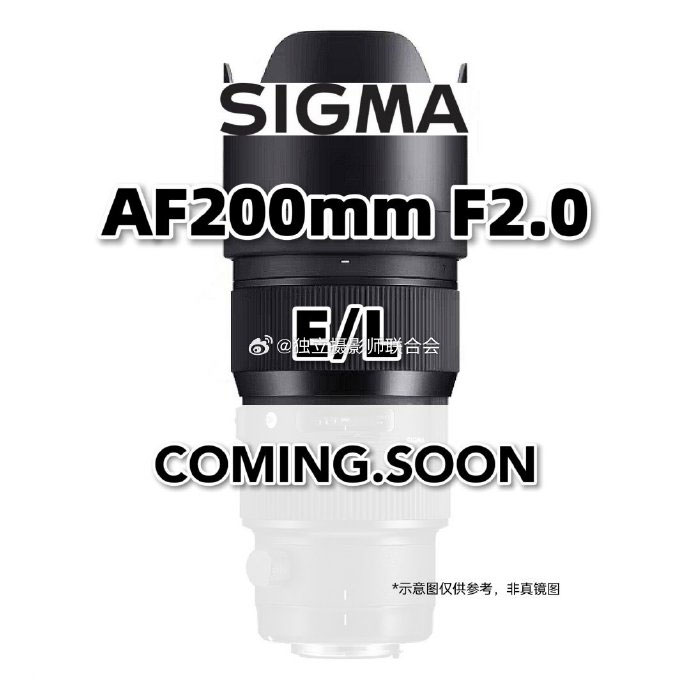
Sigma is about to release a new 200mm F2.0 full-frame telephoto prime lens. The lens belongs to the Sports series and is available in Sony E-mount and Panasonic L-mount. There is currently no other specific parameter information. It is expected to be released soon. Users who like bokeh should not miss it. In a recent interview, Sigma said we will be revealing a unique lens soon that never existed before. Is that the same? We will post more updates here as soon as they become available.
Get LIVE RUMORS –> FACEBOOK | TWITTER | INSTAGRAM to get live news + Sigma Rumors + Camera News
sours webio
|
KEEP THIS BLOG ALIVE - Support New Camera Buy Canon Lenses, Buy Music CD or Digital Camera at amazon it helps this site, and you do not pay anything extra, it is just a way to help support this site.

|















